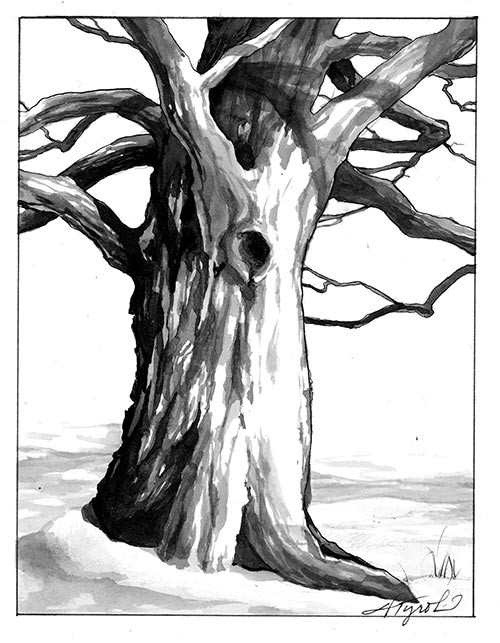
There’s something in us that can’t help but be impressed by an old tree. Perhaps we’re simply in awe of something that has outlived generations of humans and will outlive us.
We acknowledge this when we compare the giant sequoia groves to a cathedral. When we compile state lists of big old trees. When we give names like Methuselah to the longest-lived specimens.
Most trees are not destined to live long lives. Ninety percent of the trees in a forest will never become very big, or very old. Some will lose the race for sunlight and food. Others will succumb to insects, wind, fire, or logging.
It’s also true that all tree species aren’t created equal when it comes to potential lifespan. Some species just aren’t built to become centenarians, explained Kevin Smith, a plant physiologist with the U.S. Forest Service’s Northern Research Station. They have fragile wood or a weak stem or branch structure; they don’t invest resources in creating chemicals to ward off pests or aren’t very good at walling off wounds before fungi invade them.
But even beyond a tree’s general characteristics, there’s the specter of apoptosis – programmed cell death. According to Smith, most trees have their life span encoded in their genes. When the switch is thrown, the tree will begin to die. For some species that is measured in decades. For others, centuries. For a few, millennia. And just as with humans, some individuals live longer than others before the inevitable occurs.
The longer lived tree species of northern New England tend to be the denizens of climax forests: hemlock, white cedar, white oak, red spruce. All of those can live for hundreds of years. You might think that the oldest specimens would be found on the richest soils, where life is good. But that’s not necessarily so. There are red spruces growing high on the boulder-strewn slopes of New Hampshire’s White Mountains that are 400 years old. Some of the oldest trees in eastern North America – white cedars with 11 centuries under their bark – are growing out of the cliff faces of the Niagara escarpment in Ontario, not the most hospitable environment.
Of course it’s difficult to determine a tree’s capacity for longevity when people have spent the last few centuries cutting down the oldest and largest specimens. And efforts to date preserved specimens pulled from bogs or lakes will only provide so much information. However, standing or recently deceased specimens yield some clues to which species live longest.
According to the Eastern OldList, an online database of the oldest confirmed trees in eastern North America, a white cedar growing on the Niagara escarpment lived to the ripe old age of 1,653 before dying. Another lasted to 1,567. A 1,141-year-old specimen is still alive.
There’s a baldcypress in a swamp in North Carolina that’s 1,622 years old, an eastern red cedar in West Virginia that’s been dated at 940 years, a black gum in New Hampshire that’s listed at 679 years, and an eastern hemlock in Pennsylvania that started as a seedling 555 years ago. In the Great Smoky Mountains, there’s a tulip poplar that’s 509 years old.
The oldest white oak on the Eastern OldList is 464, the oldest red oak is 326, and the oldest white pine is 401. The oldest tree in the world, according to the OldList, the Eastern OldList’s parent database, is an unnamed Great Basin bristlecone pine growing in California’s White Mountains – it’s 5,062. It’s no wonder the bristlecone’s scientific name, Pinus longaeva, means “ancient pine” in Latin.
Since new trees can sprout from old root systems, the numbers get really eye popping if you consider the age of the roots. Smith noted that some of the largest and most enduring organisms in the world are clonal colonies of aspen. One of them, named Pando, is estimated to be 80,000 years old, though most of its stems are less than 100.
If success as a tree means passing along genes, perhaps age is overrated. “For some species their goal is simply to survive and spread. That strategy is different than being able to exploit a climax forest environment,” Smith said. “To me, if we’re looking at the success of tree species, [short-lived species like] striped maple, pin cherry, and paper birch do a great job.”


Discussion *